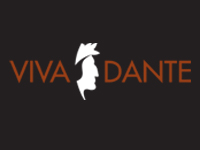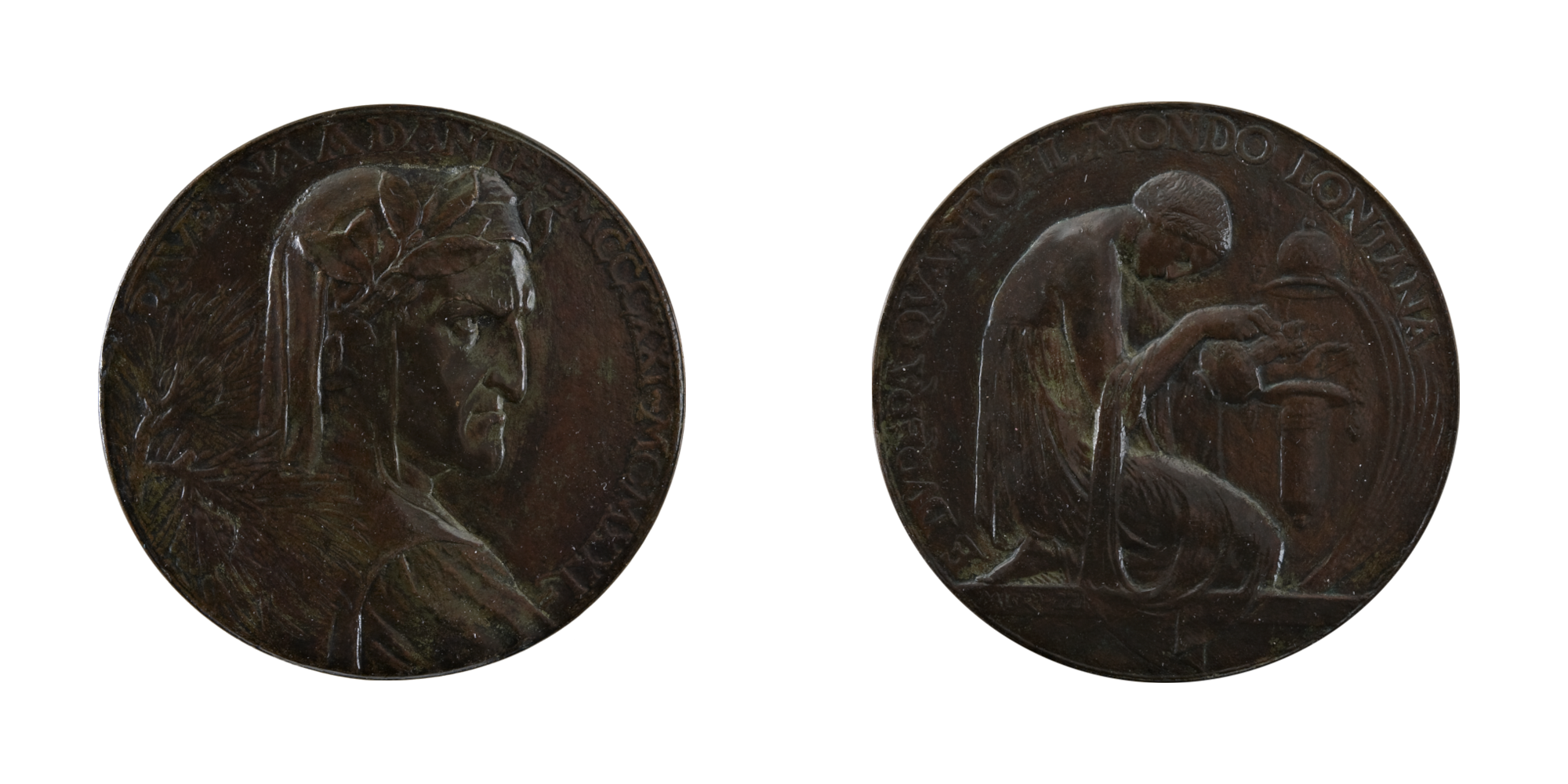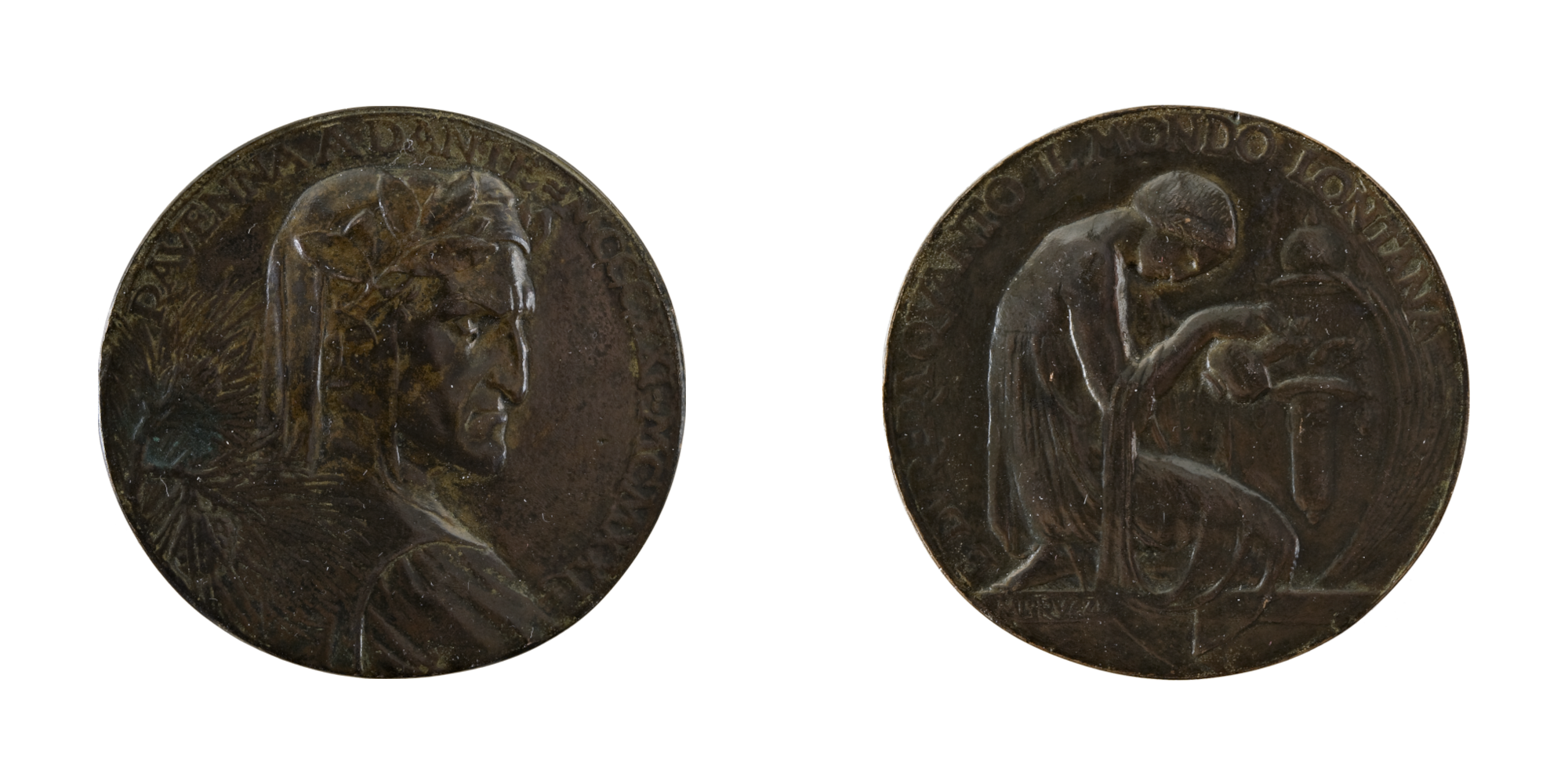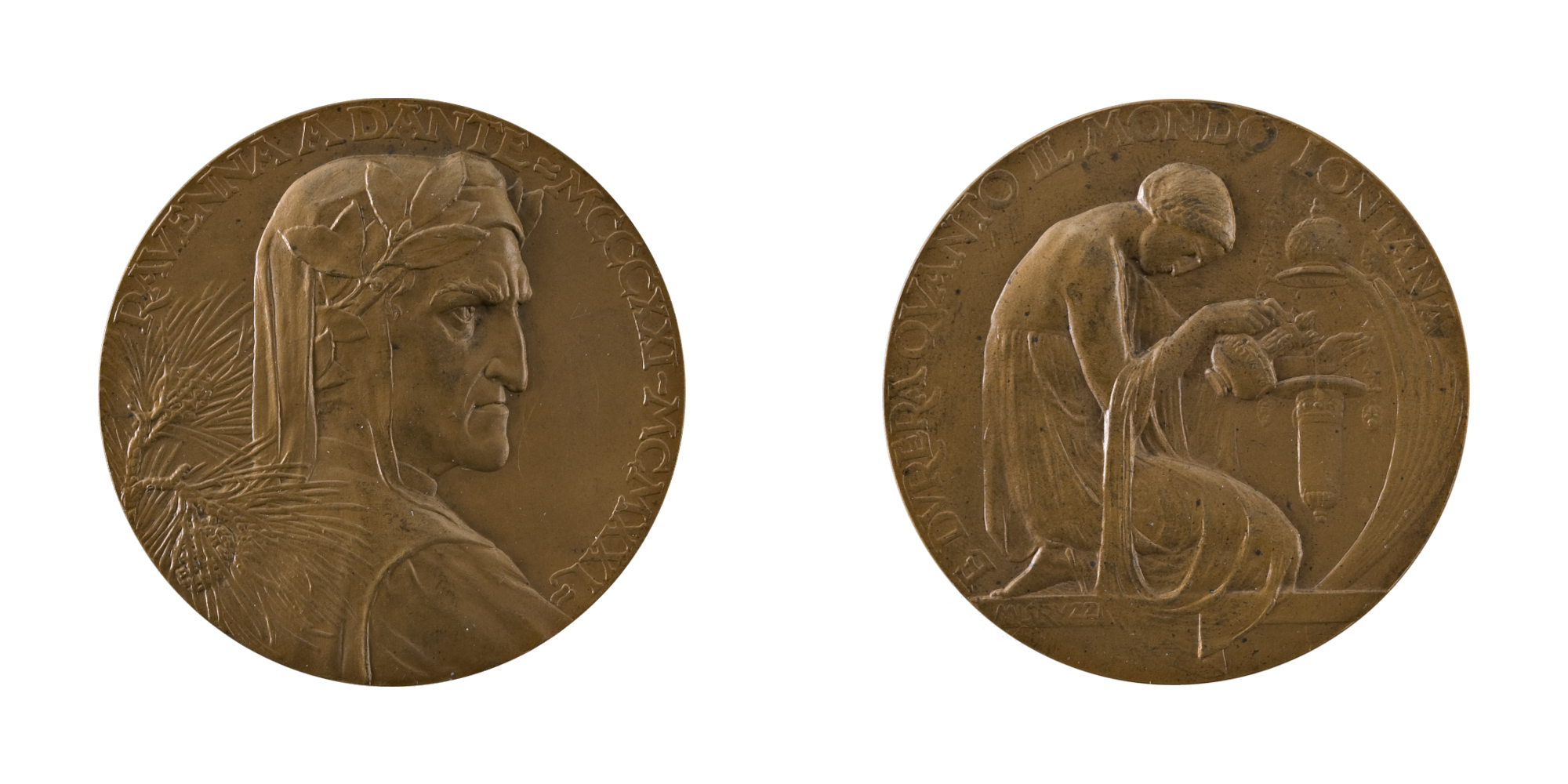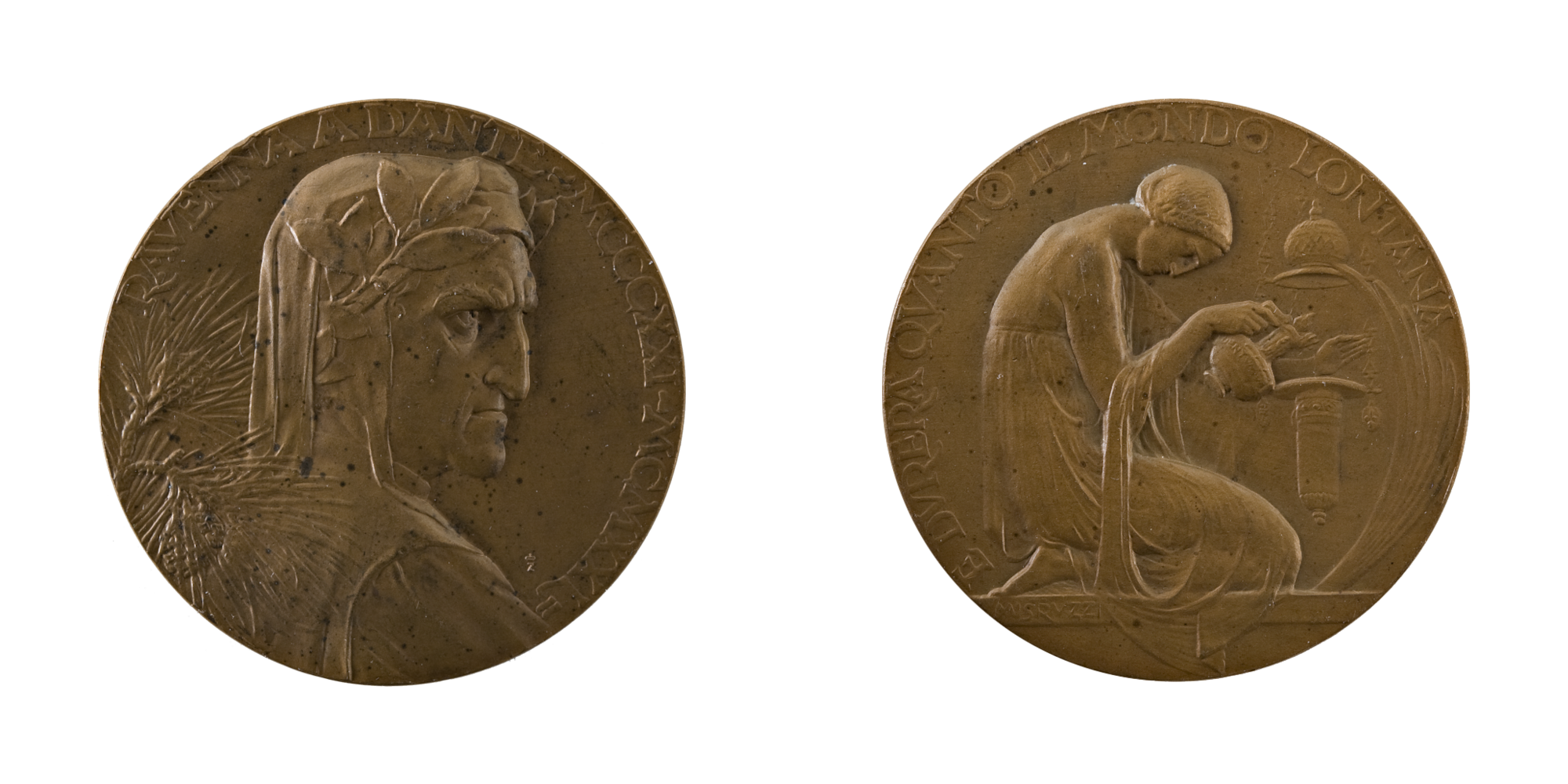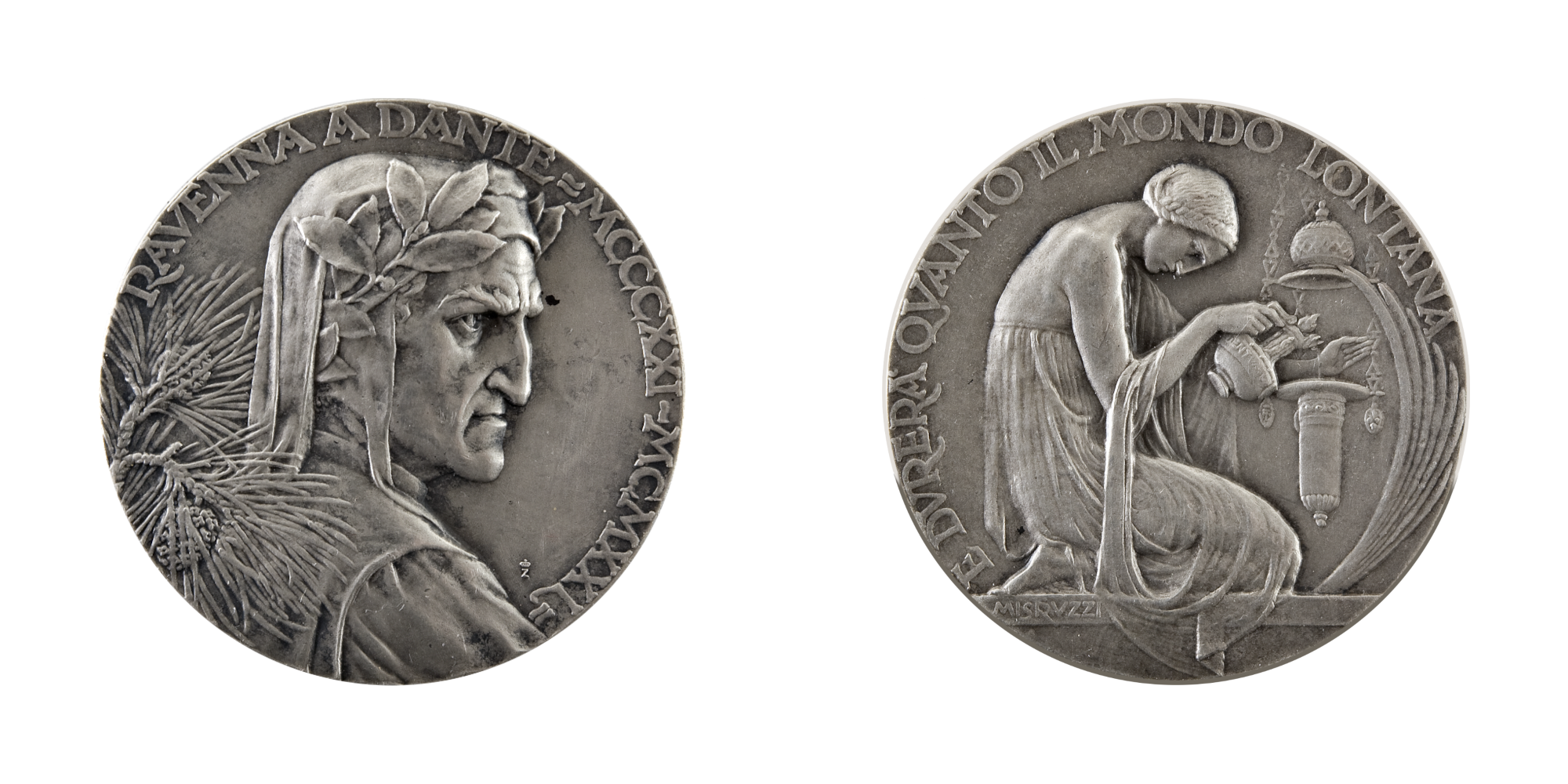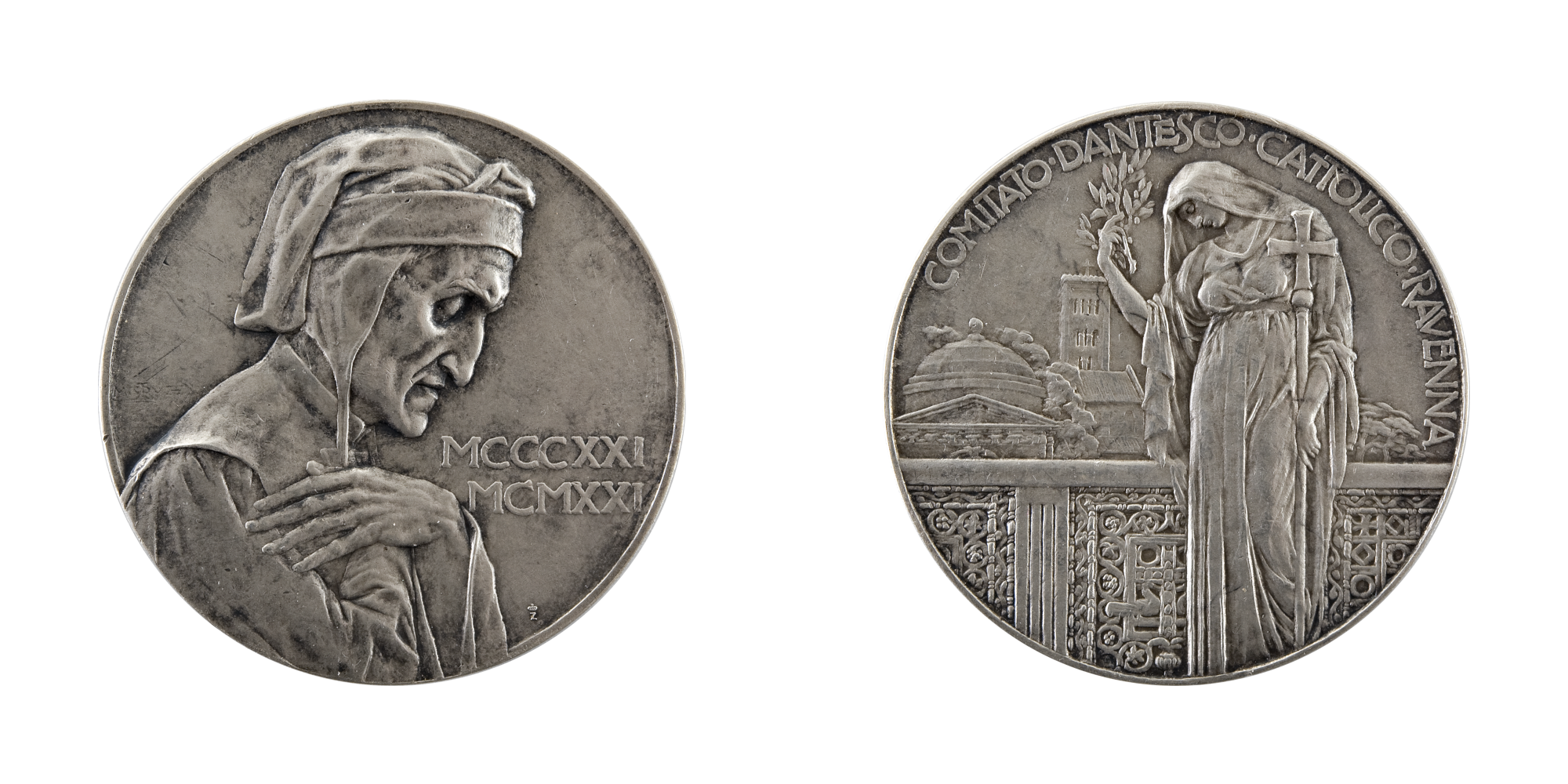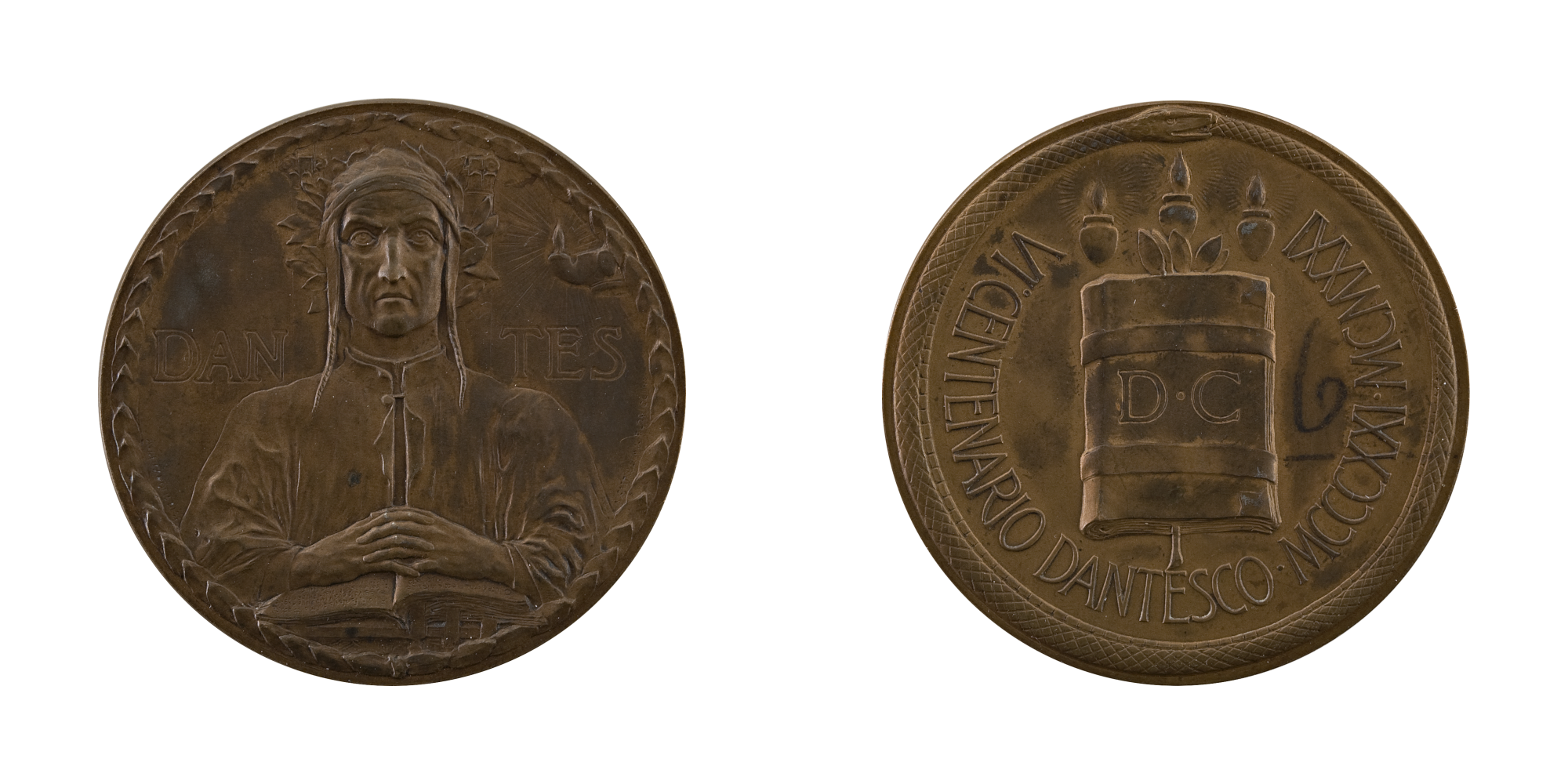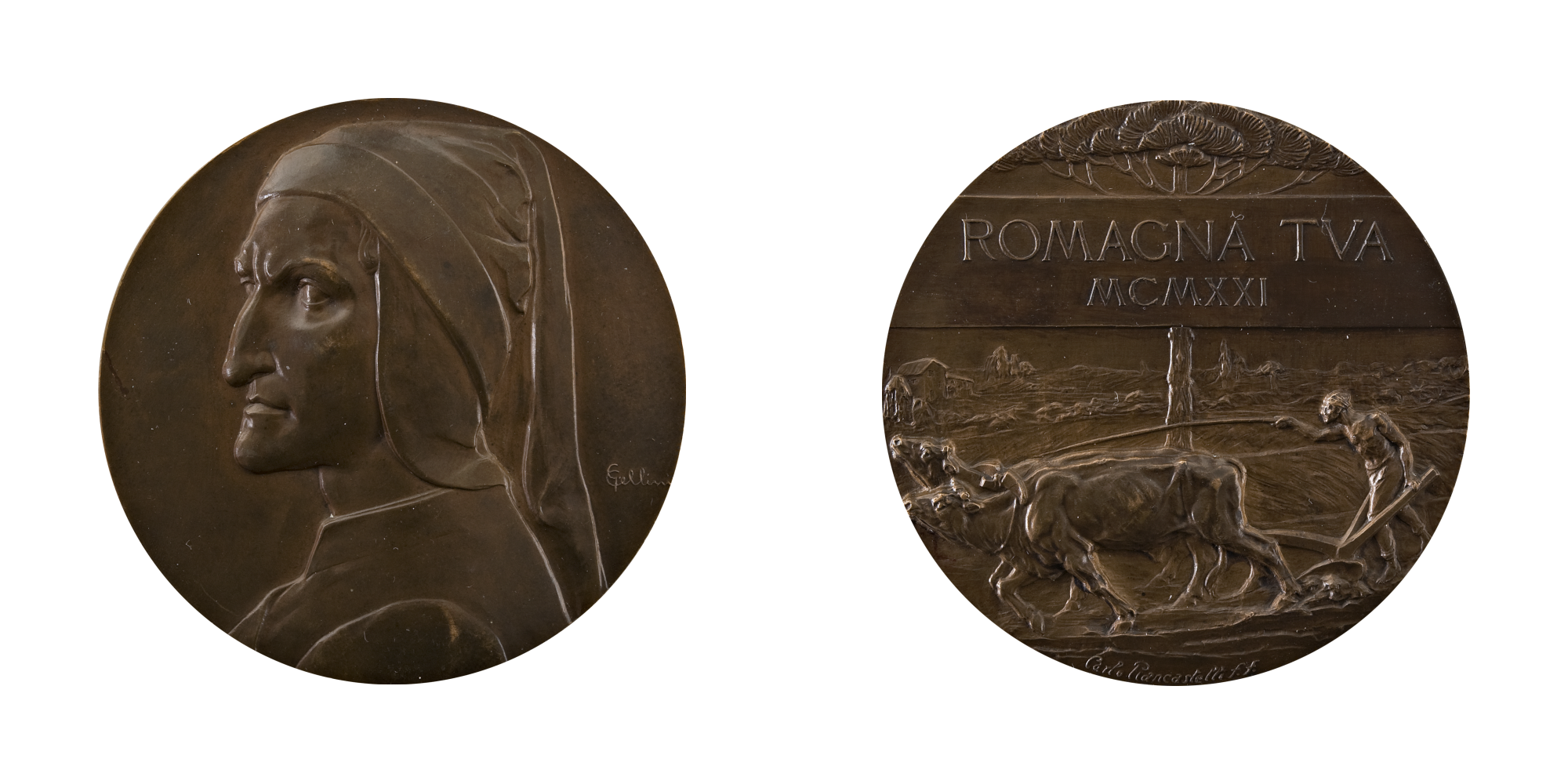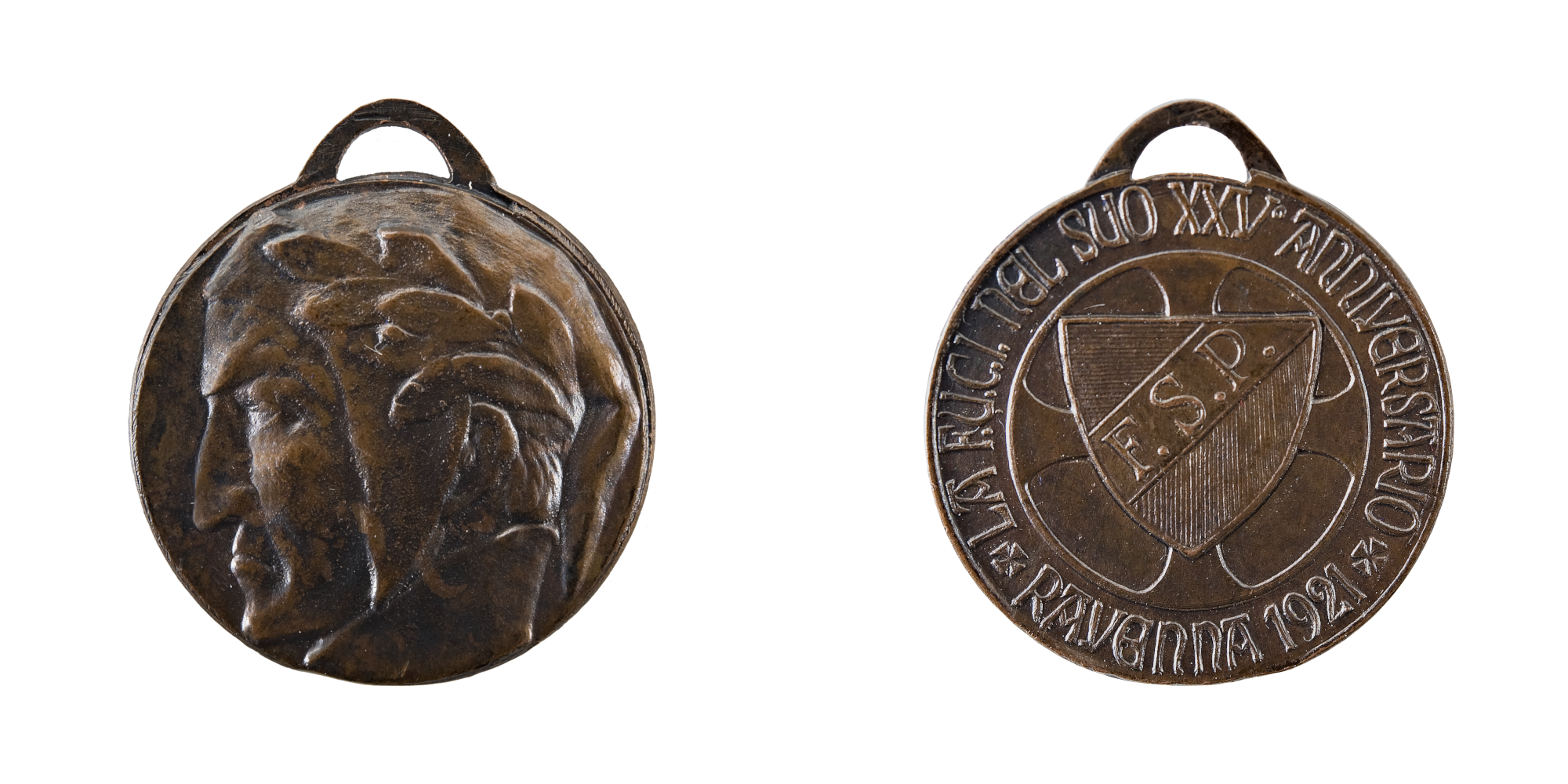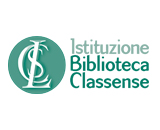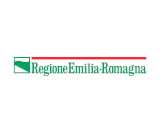The medals exhibited here were minted in 1921, in honor of the sixth centenary of the poet’s death. The symbols on them allude to Dante, celebrating the eternity of his poetic glory (laurel, oak, palm and ouroboros), to his burial (the lamp inside his Tomb), and to the city of Ravenna (pine trees and monuments of Ravenna).
The sculptor and medal engraver Aurelio Mistruzzi, from the Friuli region, created the medals for both the Civic Committee and Catholic Committee of Ravenna. Both are included in the collection, with identical iconography but in different sizes and metals (bronze and silver).
Mistruzzi, whose human qualities should also be noted, as recognized by Yad Vashem (the World Holocaust Remembrance Center) in Jerusalem for helping to save more than one life from the concentration camps, trained at the famous School of Medal Art in Rome, going on to achieve considerable success as a medal engraver. He was also active in the field of civil and funerary statue making.
Giuseppe Cellini, a versatile artist from Rome whose skills ranged from graphics to painting and design, created this exquisite medal, commissioned by Carlo Piancastelli, a collector of memorabilia from the Romagna region. Cellini was a member of the entourage of the famous writer Gabriele D’Annunzio and worked with him on the journal Cronaca bizantina, which the latter edited.
D’Annunzio, at the very height of his career in the ‘20s, was also a key reference point for Adolfo De Carolis, painter, engraver and illustrator. It was he who invented the iconography of the Dante Adriacus, subject of a well-known woodcut thus entitled by none other than D’Annunzio and reproduced here on one of the exhibited medals.
Aurelio Mistruzzi, Rome, Regia Zecca (Italy’s Royal Mint), 1921.
Cast bronze, ø 85 mm.
Cast bronze, ø 85 mm.
Bronze, ø 70 mm.
Bronze, ø 40 mm.
Silver, ø 40 mm.
Donated by the Ravenna City Committee.
Obverse/ RAVENNA A DANTE [From Ravenna to Dante] = MCCCXXI-MCMXXI around the edge. Right: laureled bust of Dante. Left: a pine branch, symbol of Ravenna and tribute to its historic pine forest, immortalized by Dante in his Divine Comedy.
Reverse/ E DURERA’ QUANTO IL MONDO LONTANA [And shall endure, long-lasting as the world] (Inferno II, 60] around the edge. Center: kneeling female figure pouring oil from a cruet into the votive lamp present in Dante’s Tomb in 1921. Right: palm branch.
Aurelio Mistruzzi, Rome, Regia Zecca (Italy’s Royal Mint), 1921.
Cast bronze, ø 85 mm.
Silver, ø 44 mm.
Commissioned by the Ravenna Catholic Dante Committee.
Obverse/ MCCCXXI = MCMXXI, right. Bust of the poet in prayer, facing to the right.
Reverse/ COMITATO DANTESCO CATTOLICO RAVENNA [Ravenna Catholic Dante Committee] at the top, around the edge. Female figure (Faith) approaching Dante’s tomb, holding an olive branch in her right hand and a processional cross in her left. In the background, the Tomb, the bell tower of the Church of San Francesco, and the pine forest.
Adolfo De Carolis, Milan, Lorioli&Castelli, 1921.
Bronze, ø 55 mm.
Obverse/ DAN TES engraved in the background. Around the edge: a crown of laurel. Center: frontal laureled bust of the Poet. Top right: a burning oil lamp. Inspired by the iconography of the Dantes Adriacus, invented by De Carolis and so named by Gabriele D’Annunzio.
Reverse/ VI CENTENARIO DANTESCO MCCCXXI-MCMXXI in the inner circle. Around the edge: ouroboros (the serpent biting its tail, symbolizing eternity). Center: a book engraved with the letters D C. An olive branch is coming out of the book. Above, three candles burn.
Giuseppe Cellini, Milan, Officine Sacchini, 1921.
Bronze, ø 69 mm.
Silver, ø 69 mm.
Commissioned by Carlo Piancastelli of Fusignano.
Obverse/ Bust of the Poet facing to the left.
Reverse/ ROMAGNA TUA [Romagna thine] (Inferno XXVII, 37) = MCMXXI at the top in a cartouche. In the exergue: CARLO PIANCASTELLI F.F. In the foreground, a pine tree and a pair of yoked oxen led by a farmer.
1921.
Bronze, ø mm 26.
Donated by the Italian Catholic University Federation (FUCI).
Obverse/ No inscription. Left: Laureled Poet in profile.
Reverse/ Around: + LA F.U.C.I. nel suo XXV° ANNIVERSARIO + RAVENNA 1921. In the center: Greek cross partially covered by a crest with the initials F.S.P., standing for Fede, Scienza e Patria (faith, science and homeland).
1921.
Bronze, ø mm 32.
Donated by the Casa di Benvenuto Cellini (Benvenuto Cellini’s house) in Florence.
Obverse/ Around: MOSTRÒ CIÒ CHE POTEA LA LINGUA NOSTRA [Through whom our language showed what it could do] (Purgatorio VII, 17). Bust of the Poet with a pointed cap falling backwards.
Reverse/ Around: VI CENTENARIO DI DANTE. Center: crown of laurel tied at the bottom L’OMBRA SUA = TORNA CH’ERA = DIPARTITA [His shade returns again, that was departed] (Inferno IV, 18). In the exergue: MCMXXI.
